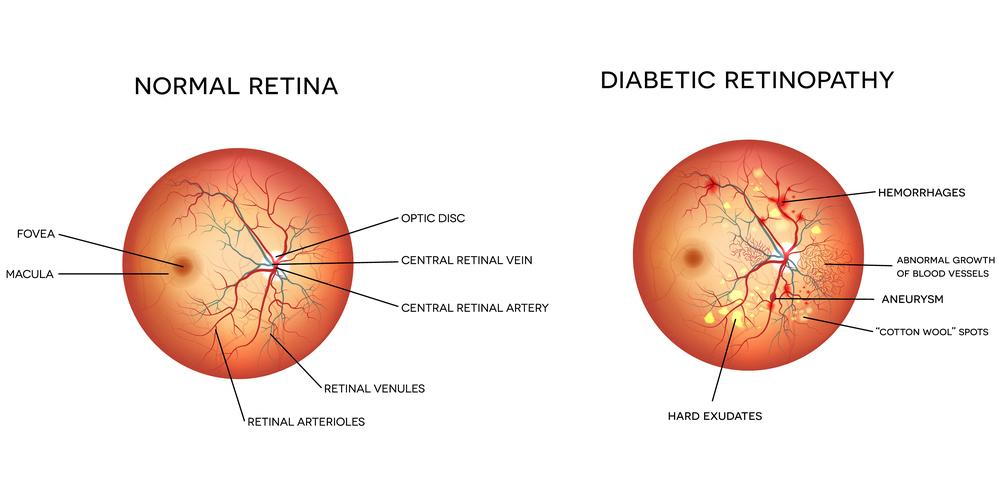CAUSES OF BLINDNESS

COMMON CAUSES OF BLINDNESS
Many of the diseases that cause blindness in the eyes can be prevented. Unfortunately, millions of people around the world lose their vision every year due to these preventable diseases. Delay in diagnosis; It can lead to progression of the disease and damage to the eyes, causing permanent vision loss. The diseases that most commonly cause permanent vision loss can be listed as follows:
CATARACT
It is the loss of transparency of the normally transparent lens of the eye. Old age is the most important factor. Traumas and some other eye diseases can also cause cataracts. Symptoms such as decreased vision, blurring, fading of colors, light reflections, double vision, and decreased night vision are observed. Although cataract can be treated, it can lead to blindness in many parts of the world because people do not seek treatment in time. Surgery is recommended when the vision level begins to affect the patient's daily life. Currently, the only available treatment is surgery.
GLAUCOMA (EYE TENSION)
Glaucoma, which occurs as a result of damage to the optic nerves due to increased intraocular pressure, is among the most important causes of blindness. Although it does not cause any serious complaints at first, it causes narrowing in the field of vision over time. First, peripheral (peripheral) vision is affected, and as it progresses, central (central) vision is affected and blindness occurs. Early diagnosis of the disease is of great importance. Routine eye examination once a year is important because it develops painlessly and insidiously and does not cause any symptoms in the eye. Diagnosis is made by detailed eye examination of the patients (measurement of eye pressure, evaluation of the optic nerve and advanced auxiliary tests when necessary). Glaucoma is mostly treated with medication. Sometimes laser treatment or surgical treatment is also required. (There is another form of glaucoma that has a sudden onset, severe eye pain, headache, and vision loss, but is much rarer; angle-closure glaucoma).
YELLOW SPOT DISEASE
Macular degeneration is an eye disease that causes vision loss through degeneration in the macular area of the retina, where the optic nerves that provide detailed vision are concentrated. Symptoms include not being able to see where one is looking, distortions in shapes, breaks in lines, and blurring. Patients have difficulty performing daily tasks such as driving, reading, or watching television. The most important risk factors for macular degeneration include age (especially over 60 years of age), smoking, familial predisposition (having family members with this disease), obesity, high cholesterol levels, vascular diseases such as hypertension and diabetes. There are two types of the disease, called wet and dry. While the dry type of macular degeneration progresses more slowly, the wet type progresses more rapidly. Macular degeneration may not be noticeable in the early stages. Therefore, after the age of 50-55, a routine eye examination must be performed and the retina must be examined carefully. Eye angiography and OCT (retinal tomography) are very important in the diagnosis and monitoring of the disease. Treatment includes special vitamin preparations, intraocular injections, and sometimes laser and surgical treatment.
DIABETIC RETINOPATHY
Diabetic eye disease (diabetic retinopathy) is among the most important causes of blindness. In the early stages of diabetes, there are no visual complaints or pain. However, when high blood sugar levels persist for a long time, it causes edema in the retina and leakage and bleeding in the retinal vessels, seriously impairing vision. Sudden vision loss may occur in the advanced stages of the disease. Blood sugar control is very important in treatment and follow-up. Intraocular injections, laser treatment and, in advanced stages, surgical treatment can also be applied. Eye angiography and retinal tomography are important in the diagnosis and follow-up of the disease.
Early diagnosis and appropriate treatment in Diabetic Retinopathy significantly reduces vision loss. Even if individuals with diabetes do not have any eye complaints, it is very important to see an ophthalmologist and have a retinal examination at least once a year.
Corneal diseases (such as keratoconus), uveitis and hypertensive retinopathy are important eye diseases that can cause permanent vision loss in the eyes, but are rarer than the above.
SOURCE:
https://ankasugoz.com/blog-korluge-neden-olan-hastaliklar-24
https://medipol.com.tr/bilgi-kosesi/roportajlar/tavuk-karasi-hastaligi
https://www.acibadem.com.tr/hayat/gorme-kaybi-nedir/






































































